
The Shrines of Pakistan often follow religious tourism in Pakistan. Pakistan is a country with unique places to explore. In addition to the dizzying areas, its most notable feature is how the population inherits culture, traditions, and customs from generation to generation without forgetting the value of its rituals and celebrations. In short, Pakistan is a country of great historical significance.
Table of Contents
Pay attention to some of the most popular attractions in Pakistan. Although people worldwide are fascinated by Sufism, its influence in Pakistan is particularly obvious. Sufis play a vital role in spreading Islam in the Indian subcontinent and are highly valued in the region.
Not surprisingly, these Sufist shrines attract thousands of shrines annually, paying them a heavy tribute every year on the anniversary of their birth and death.
Whether it is seeking souls or praying, no matter what your purpose is in visiting these gold lines, this is a memorable experience.
Pakistan has been working hard to protect its historical sites, be they museums, cemeteries, forts, or shrines.
Regarding shrines, history shows that many Sufi saints came to Pakistan with a message of worship and peace to promote the virtues of Islam. They dedicated their lives to inspiring Muslims in the area. Pakistan is lucky to be the final resting place of these well-known and loyal Sufi saints.
Here is the list of the ten most visited Shrines in Pakistan:
Data Ganj Bakhsh Hajveri Shrine is considered one of the oldest shrines in South Asia and is located in the city of Lahore, west of Bhati Gate. Abdul Hassan Ali was born and earned the nickname “Data” for his selfless and generous character.
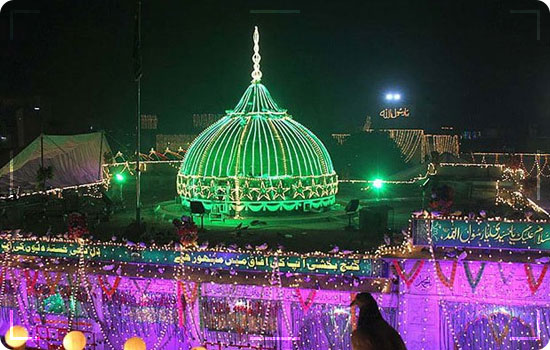
Famous Shrines of Pakistan: Data Darbar Ganj Bakhsh Hajveri, Lahore
He played an extraordinary role in spreading religion throughout South Asia. He crossed the Indus River to the Caspian Sea and conveyed the message of Islam. Furthermore, he has a good education and is a disciple of Woolsey Sufism. Additionally, he attended the Sufi Al-Junaid School, founded by Junaid Baghdad, one of the great Sufi saints.
Data Darbar is the most significant shrine in Pakistan. It looks peaceful and peaceful, and people come here to rest. Jang Bakhsh, a white marble data cemetery built by Sultan Zakir Din Ibrahim Ghaznawi.
Presumably, to protect Pakistan’s largest city from typhoons and other catastrophic events, the tomb of Abdullah Shah Ghazi is the most visited in the country. Abdullah Shah Ghazi (Abdullah Shah Ghazi) was born in 720 AD in Medina, one of the holiest cities in Islam, and is a tribe of Bani Hashem with a long history. Descendants of the Prophet (May God bless him and give him peace). He was educated in Medina until he immigrated to Sindh as a businessman in 760.
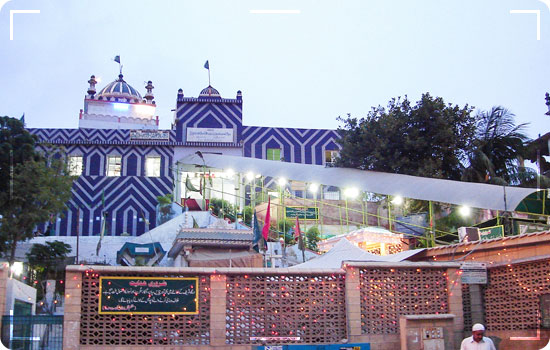
Famous Shrines of Pakistan: Hazrat Abdullah Shah Gazi Karachi
He belongs to the Saadat family, one of the noblest families in Islam, and therefore received a warm welcome. He died in 773 and was buried by the sea in Karachi. His tomb was built on a high platform, but the royal tomb was under the stairs. His Mazar attracts a constant influx of believers for various reasons: preaching love and forgiveness and resisting tropical disasters. As shown by recent events, it seems to be working. Devotees pay tribute to the saints every year, saying that doing so can satisfy their wishes. A large-scale celebration to commemorate Abdullah Shah Ghazi (Abdullah Shah Ghazi) is also held here every December, which lasts more than three days.
Syed Muhammad Usman Marwandi was known as Islamic Sufism in the 13th century. Lal Shahbaz Qalandar was born in Iran in 1177. He is a famous Sufi poet and writer who traveled throughout the Islamic world and later settled in Sahwan Sharif. Today, his body lies under a vast but detailed mausoleum.
During the trip, he visited Multan (a city in Pakistan) and met many wonderful saints, Bahauddin Zakaria, Fariduddin Gangeskar, and Jalaluddin Surkh Bush Bukhari. They became great companions and joined hands to spread the message of Islamic love and peace.
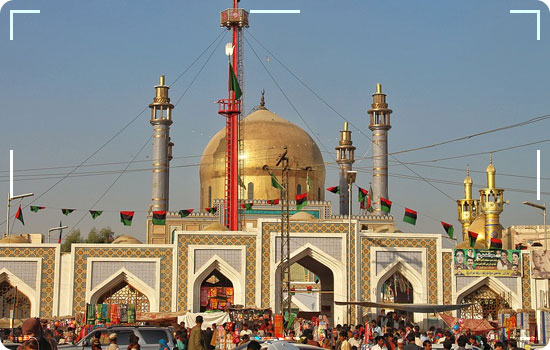
Famous Shrines of Pakistan: Hazrat Lal Shahbaz Qalandar Sehwan Sharif
The tomb of Lal Shahbaz Qalandar was built in 1356 and is decorated with unique patterns written in Sin German. Even the King of Iran, Reza Shah Pahlavi, added mirrors and gilded doors to the temple. A large number of believers visit here every Thursday. If you see during this time, you will hear Falun Gong (dhamal), which music is played with drums in Margib prayers.
Truck Art From Pakistan: Pakistan's Road Culture To The World
Sachal Sarmast (1739-1829) is a Sufi poet from Sindh, Pakistan. The saints are known as Shair-e-Haft Zaban (poet in seven languages) and Sartaj-us-Shuara. Furthermore, Sachal Sarmast was buried in Khairpur, Sindh. Abdul Wahab was born, and his familiar name, Sachal Sarmast, is his name: “Rohani Amin.” Through poems written in seven unique languages (including Sindhi, Siriki, and Persian), he spread the message of heavenly love and the principles of mysticism. Therefore, his followers awarded him other titles: Haft al Zuban Shair (writer in seven languages) and Sartaj-us-Shuara.
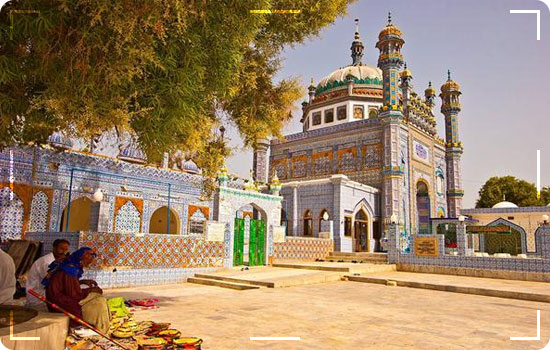
Famous Shrines of Pakistan: Sachal Sarmast Shrine, Khairpur
There are nine types of his Persian poems, Divan i-Ashqar and Dard Nama, which mainly contain philosophical texts. He wrote poetry in several languages, the most famous being Sindhi and Saraiki. His real name is Abdel Wahab Farouqi, and his nickname is “Sachal” or “Sacho.”
He used this pseudonym on his hair. Sachu means “sincerity,” and Sarmast means “ecstasy.” Sachal Sarmast means “true mystic” and can also be translated as “ecstatic saint of truth.” It is estimated that the sanctuary was built in 1330 AD. It is celebrated every June and attracts thousands of devotees.
The tomb of Bahauddin Zakaria is located in the center of Multan, in the northeast corner of the ancient fort in the center of the castle. Multan is known as the city of saints and is the last resting place of the famous Sufi saint Bahauddin Zakaria. The sanctuary is an easily recognizable building built in 1267 and made of red bricks. It resisted British rule but must be restored.
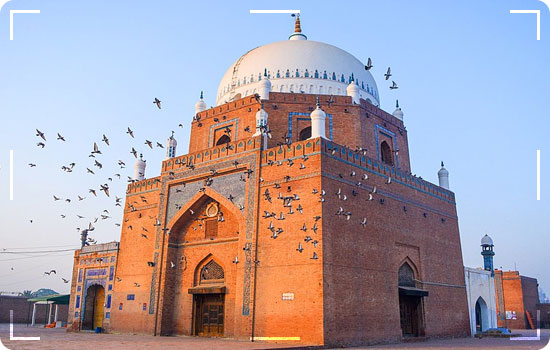
Famous Shrines of Pakistan: Hazrat Bahauddin Zakaria Shrine, Multan
This building was built in the early and mid-13th centuries and represented the earliest example of a unique transnational architectural style. According to Mumtaz, “With its square plan, octagonal drum, central dome, and minaret, the type of shrine architecture to be endured in the lower Indus River was determined. 700 years ago” (Muttaz, Nos. 44-45 page).
Although the temple was significantly damaged by British bombing on the site in 1848, Makhdoom Shah Mahmud faithfully restored it to its original foundation a few years later.
This octagonal mausoleum is the second largest in the world, reminiscent of the 14th Sheik Rukn-ud-Din Abul Fath, considered one of Multan’s most famous Sufi saints. The tomb of Shah Rukn Alam is located in the center of Multan. It is Sufi Sheik Rukn-ud-Din Abul Fath (1251-1335) and dozens of followers and relatives tombs.
Built between 1320 and 1324, it is usually classified as a significant landmark of Indo-Islamic architecture. It has inspired later monuments such as the Tugluk Mausoleum in Delhi and many shrines in Uch Sharif.
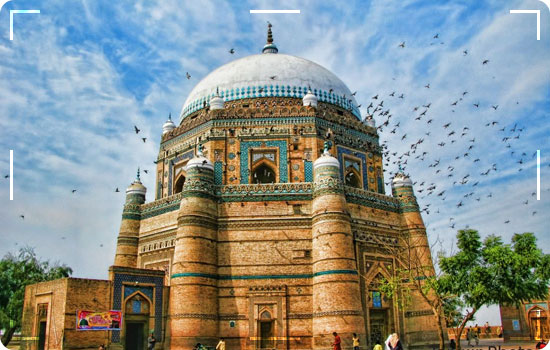
Famous Shrines of Pakistan: Shah Rukn-e-Alam Multan
This beautiful tomb is owned by the famous 19th-century Punjabi Sufi poet Khawaja Ghulam Fareed, who is multilingual and belongs to the Chishti-Nizami Sufi order. Hazrat Khawaja Ghulam Farid was born in 1261 (November 26, 1845 AD) in Kot Mithan (Pakistan), Chacharan, Sindh Province, to a family of Arab immigrants who came to the country. He was an outstanding scholar at the time and wrote several books.
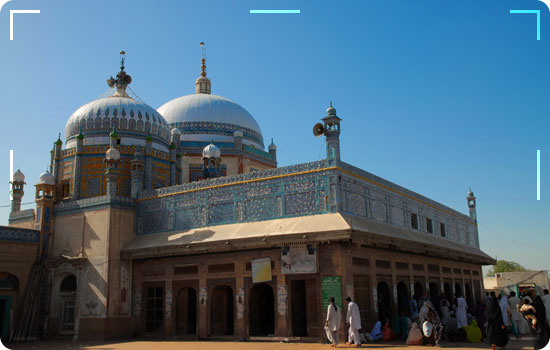
Famous Shrines of Pakistan: Khawaja Ghulam Fareed Shrine Rajanpur
He knows Arabic, Persian, Urdu, Sindhi, Punjabi, Braj Bhasha (Braji), and Seraiki. He is a poet of Siraiki and Urdu. He also wrote some poems in Sindhi, Persian, and Braji languages. He is an imperial poet. Oppose the British rule in Bahawalpur. In his verse, he said to Governor Bahawalpur: ” You rule yourself on your state and finish police station of British from your state.”
The mausoleum of Sindh’s greatest Sufi poet, Shah Abdul Latif Bhitai (1689-1752), is in Hyderabad. Bhitai’s poems have been translated into many languages, equivalent to those of Persian poet Jalal al-Din Rumi.
The great saint, poet, and philosopher Shah Abdul Latif Bhittai was the son of Syed Habib Shah. The ancestors of Shah Latif moved from Herat to Sindh during the Tamer Lane and made it their home. Shah Latif (Shah Latif) began to write poetry when he was young.
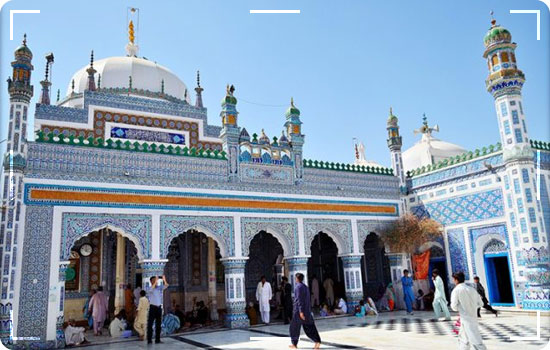
Famous Shrines of Pakistan: Shah Abdul Latif Bhitai, Hyderabad
Shah Latif wrote poems in the language of familiar people. He is also a great musician, simplifying the time’s music. He invented a simple musical instrument, “tamburu,” which is now well known throughout Sindh. Shah Latif died in Bhit Shah in 1752.
The famous Sindhi King Ghulam Shah Kalhoro built a mausoleum on his tomb. Shah Latif’s urs is held in the mausoleum on the 14th of Safar every year. People from all over Pakistan expressed their gratitude.
The tomb is said to be that of Shah Shams al-Tabrizi, a Sufi tribe member who lived in the 12th and 13th centuries. Shams al-Tabrizi or Shams al-Din Muhammad (died 1248) was a Persian Muslim believed to be the spiritual teacher of Maulana Jalaluddin Muhammad Balkhi (also known as Rumi). He is revered in Rumi’s collection of poems, especially in “Divan al-Shams al-Tabrizi” (Shams Tabrizi’s Collection).
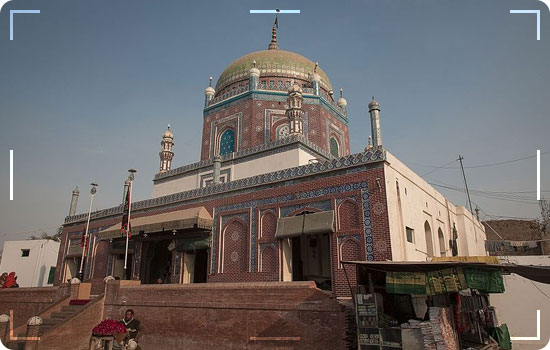
Famous Shrines of Pakistan: Shah Shams Tabriz, Multan
Traditionally, Shams taught in Rumi in Konya for many years and then retired in Khoy city (now in West Azerbaijan Province, Iran), where he died and was buried. UNESCO has nominated the tomb as a World Cultural Heritage Center. A saint named Shams al-Tabrizi was also buried in Multan, Pakistan. The tombstones there clearly indicated that Shams al-Tabrizi himself was the spiritual guide of Rumi from Konya, Turkey.
The mausoleum in this palace is the resting place of the Sufi poet Baba Bulley Shah in the 17th century. Baba Bulley Shah was a poet of Sufi Punjabi, believed to have lived between 1680 and 1758. His real name is Abdullah Shah, but his Bulley is his family title, the name he chose as a poet. Bulley Shah is a direct descendant of the Prophet Muhammad (PBUH) through Sheikh Abdul Qadir Gilani (RA) ‘s descendants from Baghdad.
Sikh Tourism In Pakistan
Very common in South Asian poetry, there is a signature line in his poem that contains his name. Bulley Shah moved to Kasur, which is now in Pakistan. The form of poetry used by Buhler Shah is mainly called “Kafi,” a style of Punjabi, Sindh, and Siraiki poetry used not only in Sindh and Sufis in Punjab but also among Sikhs. Bulley Shah’s writings portray him as a humanitarian who provides solutions to the social problems of the world around him in his life.
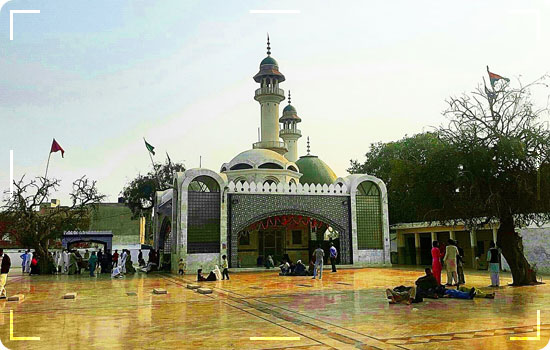
Famous Shrines of Pakistan: Baba Bulley Shah, Qasoor
His spiritual master is Shah Inayat Qadri of Lahore. His Bulley Shah’s ancestor was Och Gilanian of Bahawalpur, who is now part of Pakistan, even though his ancestors are from Uzbekistan. Hara moved. From there, his family moved to Malakwal, Pakistan, and then to Pandok, about 14 miles southeast of Kasur, Pakistan.
Muslims will visit these shrines not only but also people of different religious beliefs. Unsurprisingly, the missionaries spread the message of love, harmony, and peace everywhere, like the mysterious saints buried inside. These values are not limited to specific religious beliefs. The magnificent scenery and tranquil atmosphere of these holy sites provide visitors with great opportunities for relaxation. Everything is surprising and important in the encircling area.
Since 2017, Saba Ghani has been serving as the talented and dedicated chief content writer for Pakistan Tour and Travel & EMHI Solutions. With her exceptional writing skills and in-depth knowledge of the travel industry, she has been instrumental in crafting engaging and informative content that captivates the audience. You can catch her at [email protected] or Twitter
Offering Pakistan Tour And Travel plans from Islamabad , Lahore & Karachi